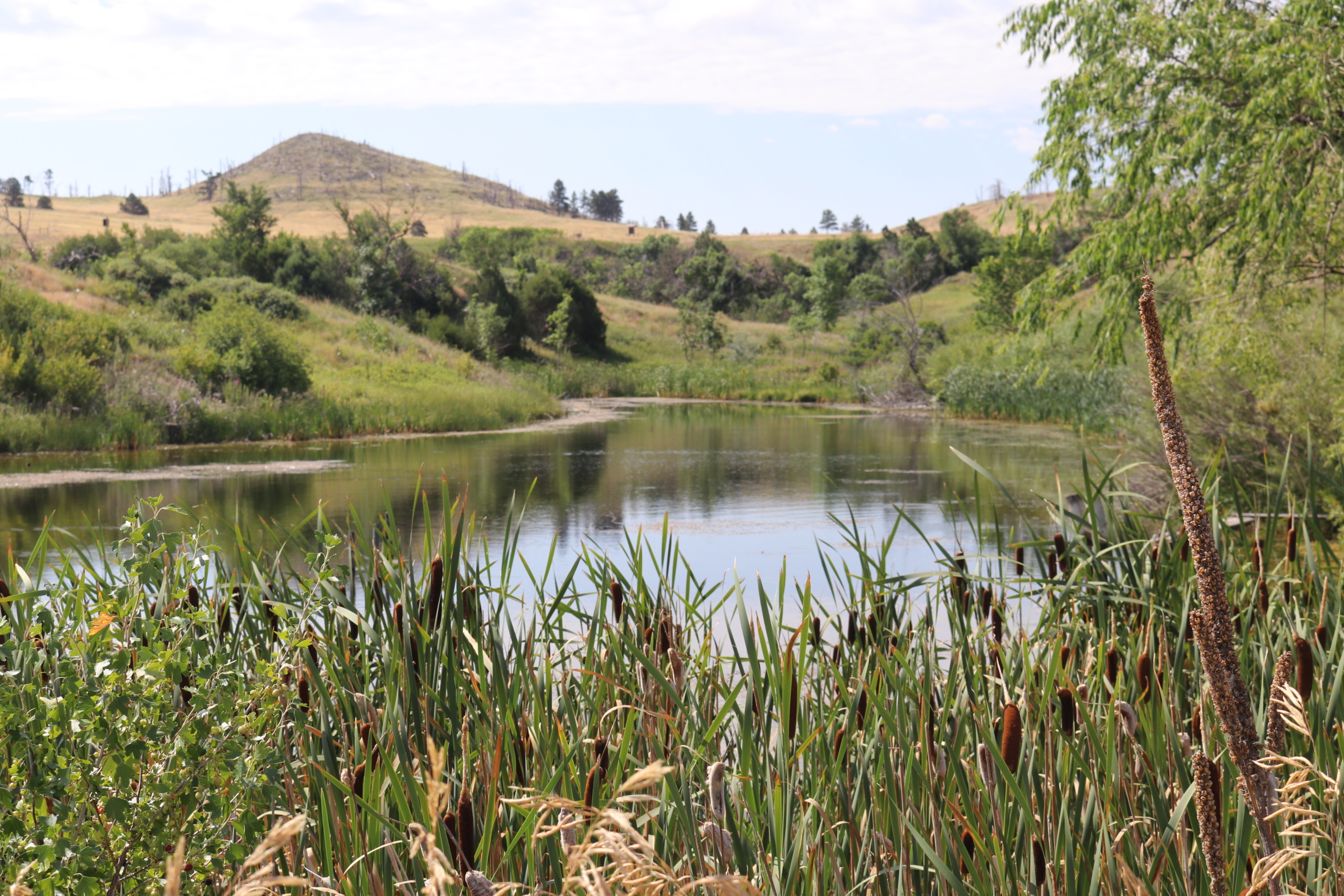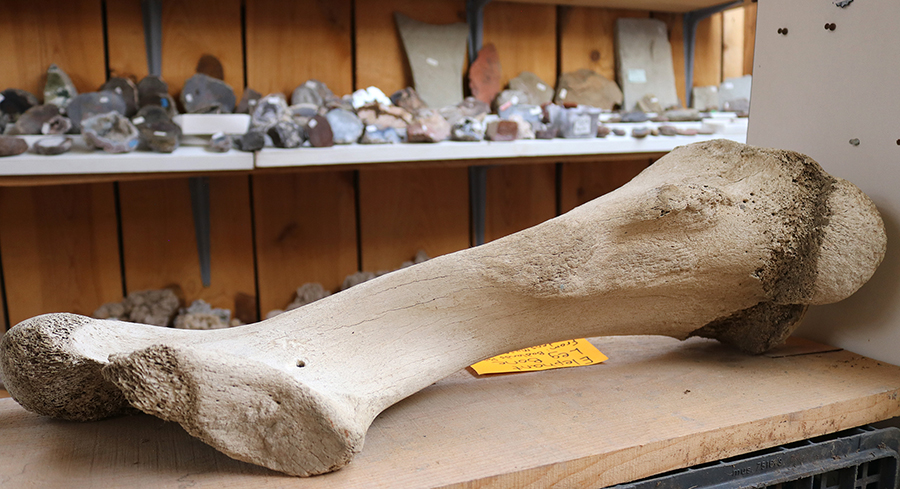Bucket List
Thinking of Northwest Nebraska’s past typically conjures images of dusty homesteaders ranching in the Pine Ridge, burly fur traders trading goods along the White River, and regal Lakota hunting buffalo on the plains. But long before the region’s Wild West history, millions of years ago, mammoths, saber-toothed cats and other prehistoric beasts roamed the area.
Established in 2009, the Fossil Freeway takes adventurers to sites between Interstates 80 and 90 where evidence of the magnificent prehistoric beasts remains. The “freeway” begins in Kimball to the south and in Hot Springs, South Dakota, to the north, and includes sites in Dawes and Sioux Counties. This bucket list will take you on an exciting adventure and offers ample opportunity for sightseeing, hiking, biking, camping, stargazing and more. This bucket list can be completed in a single day, if desired.
Toadstool Geological Park was named for its unique rock formations – giant, narrow clay pedestals topped with slabs of sandstone that resemble toadstool mushrooms. Many of the rocks preserve fossils and footprints of extinct species like tortoises, rhinos, saber-toothed cats, early three-toed horses, camels and lizards. Hikers frequently comment that the colorful, odd-shaped formations have a “moonscape” appearance.
A one-mile loop trail guides visitors along many of the incredible formations. A second trail connects Toadstool with Hudson-Meng. Interpretive brochures detailing the fascinating geology and paleontology are available at the trailhead. Nearby, a reconstructed sod house offers visitors a glimpse into the life of an early homesteader on the prairie.
The park offers several opportunities for photography, hiking and is an excellent location for stargazing if you choose to stay overnight at the park’s campground. Be sure to pack plenty of water as the campground has none available.
NOTE: Toadstool Road is unpaved and can be difficult to traverse during or after significant rainfall.
In 1954, while attempting to dig a stock pond, Nebraska ranchers Bill Hudson and Albert Meng uncovered a large pile of bones. During the 1970s, Dr. Larry Agenbroad of Chadron State College began excavating the site believed to be the bonebed of nearly 600 ancient bison. Considered to be one of the most important archaeological discoveries in North America, the Hudson-Meng site has been enrolled in the National Register of Historic Places.
Scientists and student excavators have been working with the Forest Service for decades to try to understand the exact nature of this mass kill site and the role that ancient Paleo-Indian people may have played. In 1997, a climate-controlled enclosure was completed to cover the central portion of the bonebed. There is also an interpretive trail from the parking area to the visitor center, and a trail connects Hudson-Meng with Toadstool Geologic Park as well.
Hudson-Meng is open during the summer season only, and typically only on Fridays and Saturdays, though group reservations for other days can be made at least one week in advance. Contact 308-432-0300 for details.
For rockhounds and fossil lovers, a must-see stop in Northwest Nebraska is Prairie Agate Rock Shop and Fossil Museum in Crawford.
Owned by Gary and Valerie Homrighausen, the shop, located along Highway 20, is instantly recognizable by the large, mounted metal sculpture of a T-Rex head out front. The business, inspired by their now-grown son Tyrell’s fascination with fossils, showcases finds from Northwest Nebraska and around the world. Tyrell is also part of the business now, as well, and they serve as local rock and fossil experts. They point visitors and residents alike in the direction of interesting finds and educate them on rock and fossil hunting.
Their personal finds are showcased in the Fossil Museum at Prairie Agate Rock Shop, serving as examples of what can be found in Northwest Nebraska. Amateur fossil hunters and rockhounds are shown the “local table” so they can see what the fossils or rocks looks like in the rough – and what can be made of it.
The Homrighausens suggest places in Northwest Nebraska for rockhounding and fossil hunting and schools them on the rules – no vertebrate fossils, teeth or artifacts can be collected from Nebraska National Forest and Grasslands.
Prairie Agate Rock Shop is open from early spring to early fall, seven days a week from 10 a.m. – 5 p.m. During the off-season, a phone number is posted on the gate, and they are willing to open upon request.
At 22,000 acres, Fort Robinson State Park is the largest in Nebraska. Formerly an active military post, the fort is now a popular destination for outdoor, recreational enthusiasts and history buffs. Fort Robinson played an important role in the early history of settlers in Northwest Nebraska and is steeped in a sometimes-tumultuous history. Legendary Lakota warrior Crazy Horse was killed on its parade grounds and it was a key location during the Cheyenne Breakout. It was once called home by the famous Buffalo Soldiers, black cavalry soldiers who were considered some of the world’s best riders. Its first post commander was General Arthur MacArthur, father to General Douglas MacArthur and Dr. Walter Reed, namesake of Walter Reed Hospital, once practiced there. Later in its history it served as the largest remount in the world where horses were trained for military duty across the nation. During World War II the fort housed German P.O.W.s of the famed Afrika Corps before eventually being abandoned by the army in 1947.
Most notably, for the purposes of this road trip, is the Trailside Museum of Natural History, housed in the fort. The museum features one of the most unique exhibits in the nation – The Clash of the Mammoths. In 1962 in the badlands north of Crawford, Nebraska, two men happened upon a portion of a femur jutting out from a bank of earth. The two men said they knew they’d found something big, but had no idea they’d just discovered something no one else ever had and likely no one else ever will.
The fossil remains the men found, and which are now on display at the Trailside Museum, are that of two massive mammoths, locked together by the tusks, trapped in a battle that ended with the two behemoths dying, still entangled where they lay.
The museum is open Thursday through Sunday from 10 a.m. to 5 p.m. in April, May, September and October. Summer hours, which run from Memorial Day to Labor Day, are 9 a.m. to 6 p.m. daily. The museum is closed from November through March, except by appointment.
Nineteen million years ago, strange creatures roamed the savanna that is now western Nebraska. The ancient mammals included tiny, two-horned rhinoceros, the Moropus – a horse/giraffe/tapir/rhinoceros/bear-like creature and the ferocious seven-foot-tall large-tusked pig.
Though well-known for decades by the Lakota, the first fossils here were discovered by Captain James H. Cook in 1878. Cook, and his son Harold, developed a headquarters at Agate Springs Ranch for fellow paleontologists. Skulls and complete skeletons were found in the early 1900s, many of which were housed at the Carnegie Museum and the American Museum of Natural History.
Over the years, Cook and his family fostered friendships with Chief Red Cloud and other members of the Oglala Lakota Sioux. During their visits, the parties would exchange gifts which Cook decided should remain with the ranch. The National Park Service Visitor Center houses a room of collectables, such as buckskin suits, gloves, one of Red Cloud’s shirts, pipebags and whetstones. Historic photographs accompany several of the artifacts.
The visitor center and museum is open from 8 a.m. to 4 p.m. during the off-season and from 9 a.m. to 5 p.m. during the summer season.





